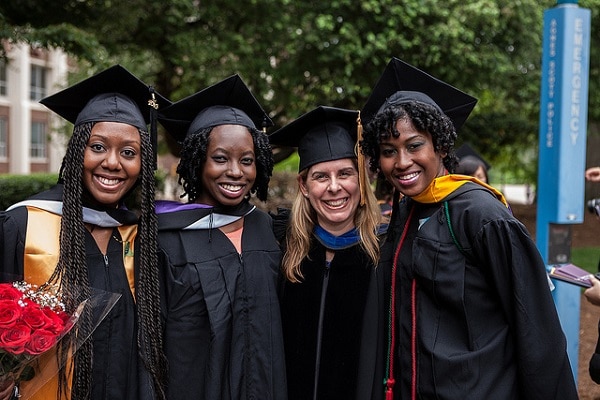Not only are African-Americans in engineering notably under-represented, but their graduation rates have in fact gone down in recent years. Rates for African-American women in engineering, though, present some intriguing questions. Could it be that, relative to other demographic groups of women, they are overachieving in engineering?
Looking at women by race and ethnicity, African-Americans are the most likely to get an engineering degree. And white women are the least likely. Earning 26.8% of all African-American engineering bachelor’s degrees in 2012, African-American women exceed the rate of women in all other demographics in their share of degrees, as broken out by sex.
- African-American, 26.8%
- Asian or Pacific Islander, 23.0%
- Hispanic, 22.5%
- American Indian, 22.3%
- White, 17.4%
Degree Ratios, Women:Men
Percentages, of course, can indicate many things. For example, these graduation rates also point up how many more African-American women than men attend college. Indeed, another list that African-American women top is the ratio of women getting undergraduate degrees to men getting them.
- African-American, 1.92:1 (113,601/59,267)
- American Indian, 1.57:1 (6,561/4,182)
- Hispanic, 1.56:1 (107,568/69,131)
- White, 1.28:1 (635,766/496,923)
- Asian or Pacific Islander, 1.19:1 (64,348/53,913)
In other words, African-American women earn about two of every three African-American undergraduate degrees, about 65%. White women earn about 11 of every 20 white degrees, or 56%. Because there are so many more of them to start with, relative to men, African-American women would be expected to get a higher portion of all degrees within their cohort than women in demographics more evenly divided by sex.
How Things Might Look with Full Representation
The question, then, is, how much higher a portion would they be expected to get? (Note: Please excuse the math to follow, but, hey, this is engineering we’re talking about—math is part of the deal.) Using the first set of percentages in combination with the ratios of women to men can help us understand what African-American and white women’s engineering degree rates would be if they earned degrees in engineering at the same rate as they do overall.
Suppose “full” representation in engineering meant African-American women earned 65% of engineering degrees, just as they do overall. Their real 26.8% share, then, is 41% of their theoretical, “full” share (26.8/65).
For white women, 56% of engineering degrees would be “full” representation. Their real 17.4% share is 31% of their “full” share (17.4/56).
To be sure, none of this is cause for celebration. Women remain, on all fronts, significantly under-represented in engineering. But seen from this angle, at least, African-American women seem to be completing engineering degrees at a higher rate than white women. (As it happens, only Asian or Pacific Islander women exceed African-American women’s 41%, with 23.0% registering as 42.6% of their full representation rate of 54% of all degrees.)
Read More from Eric Iverson at start-engineering.com

